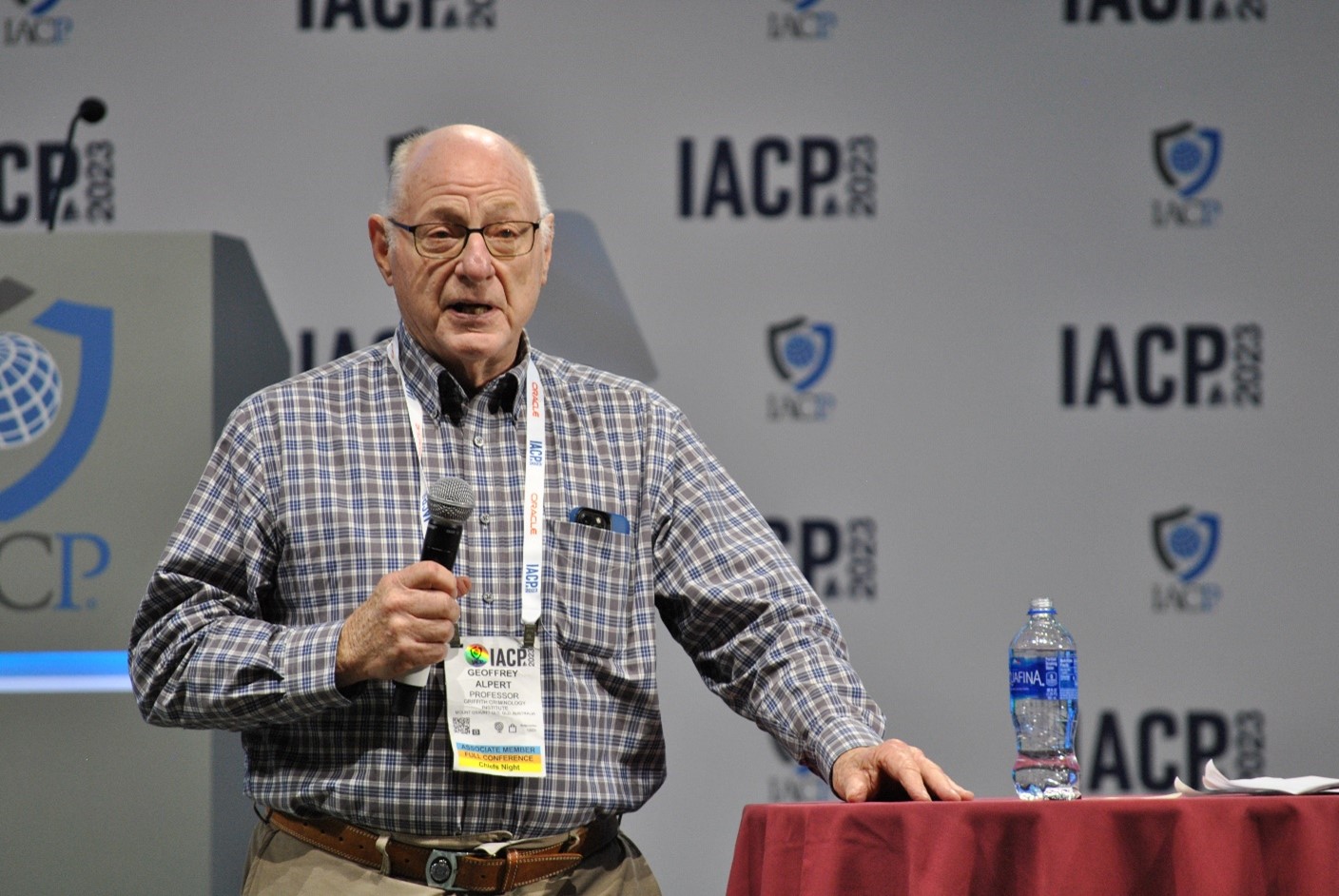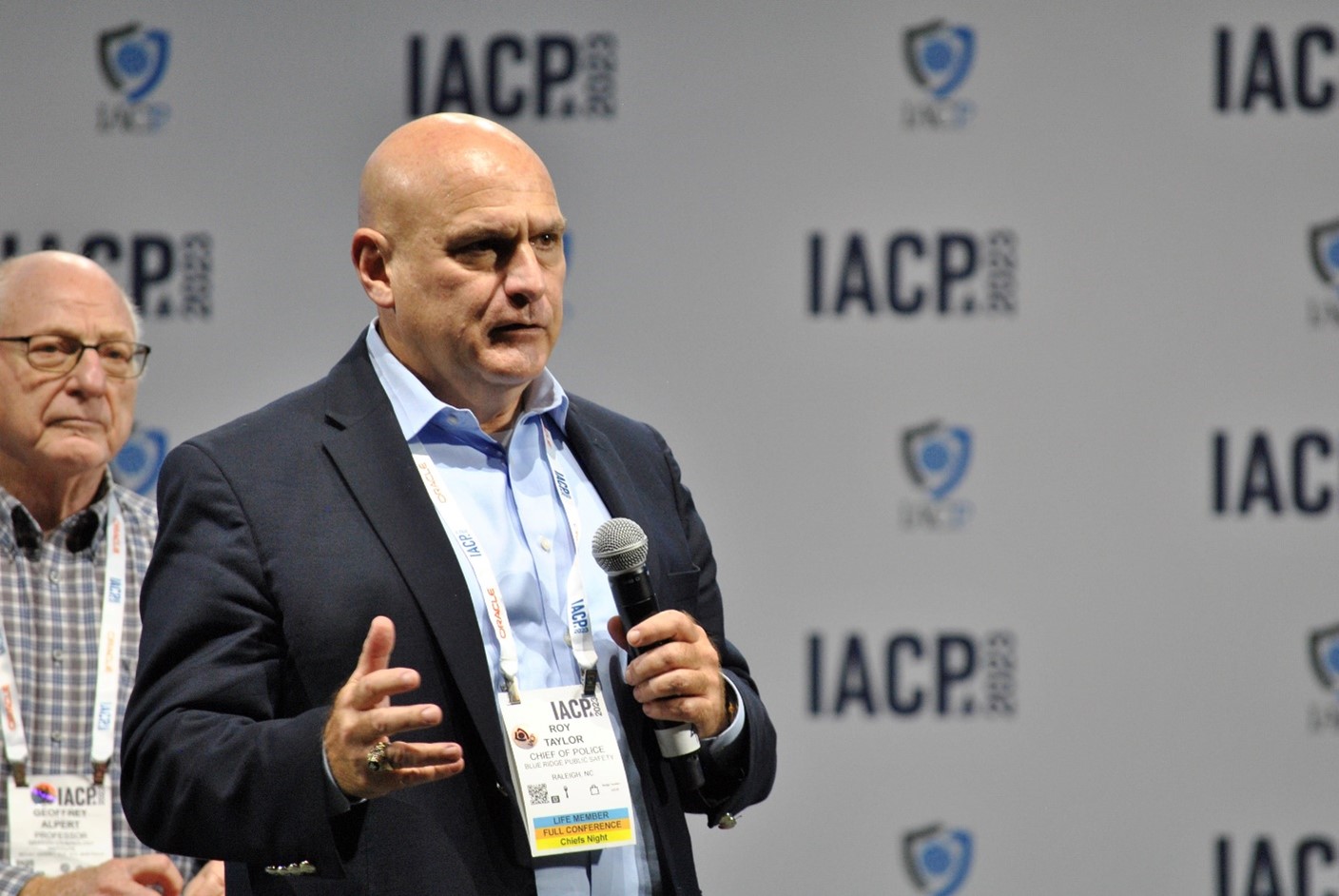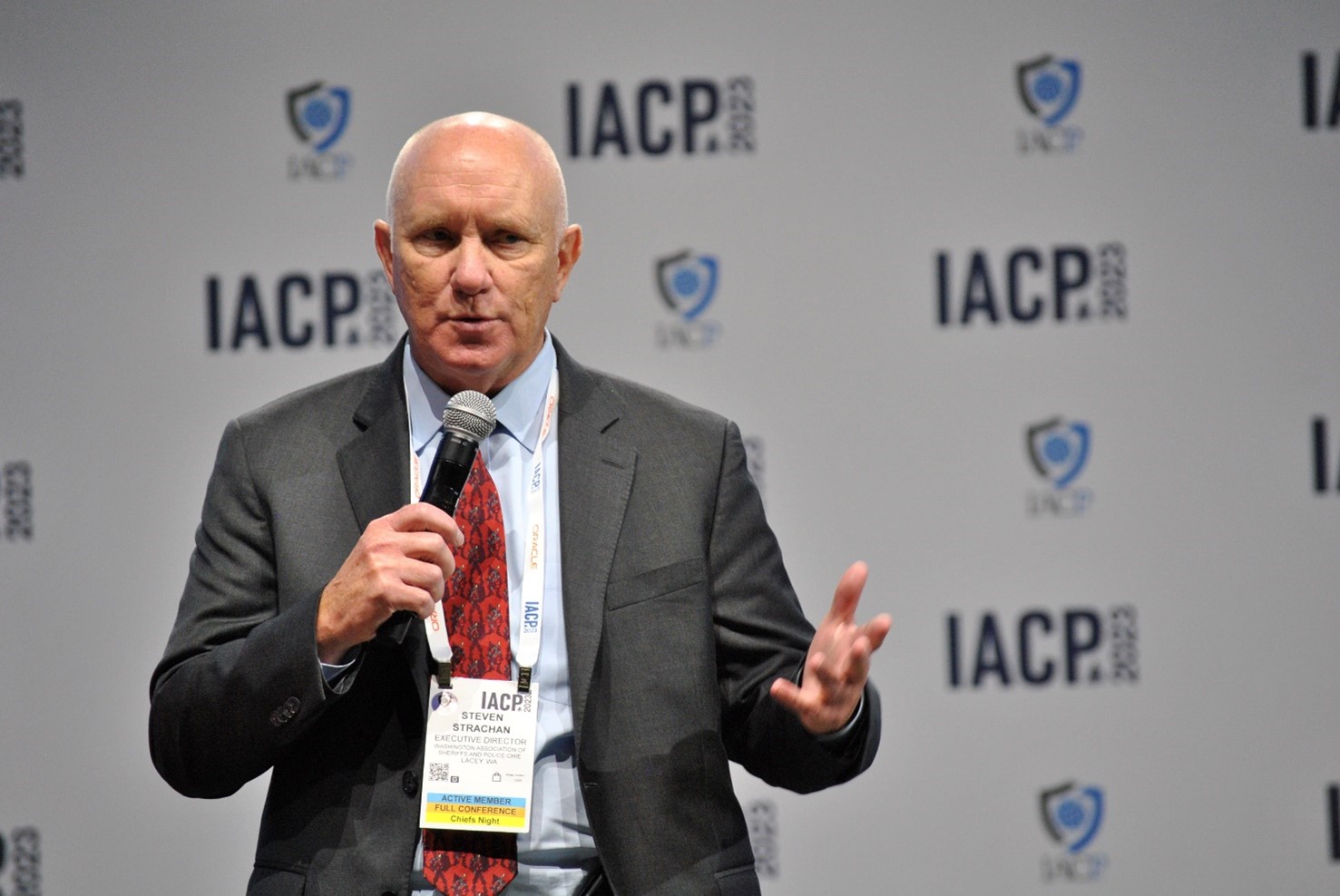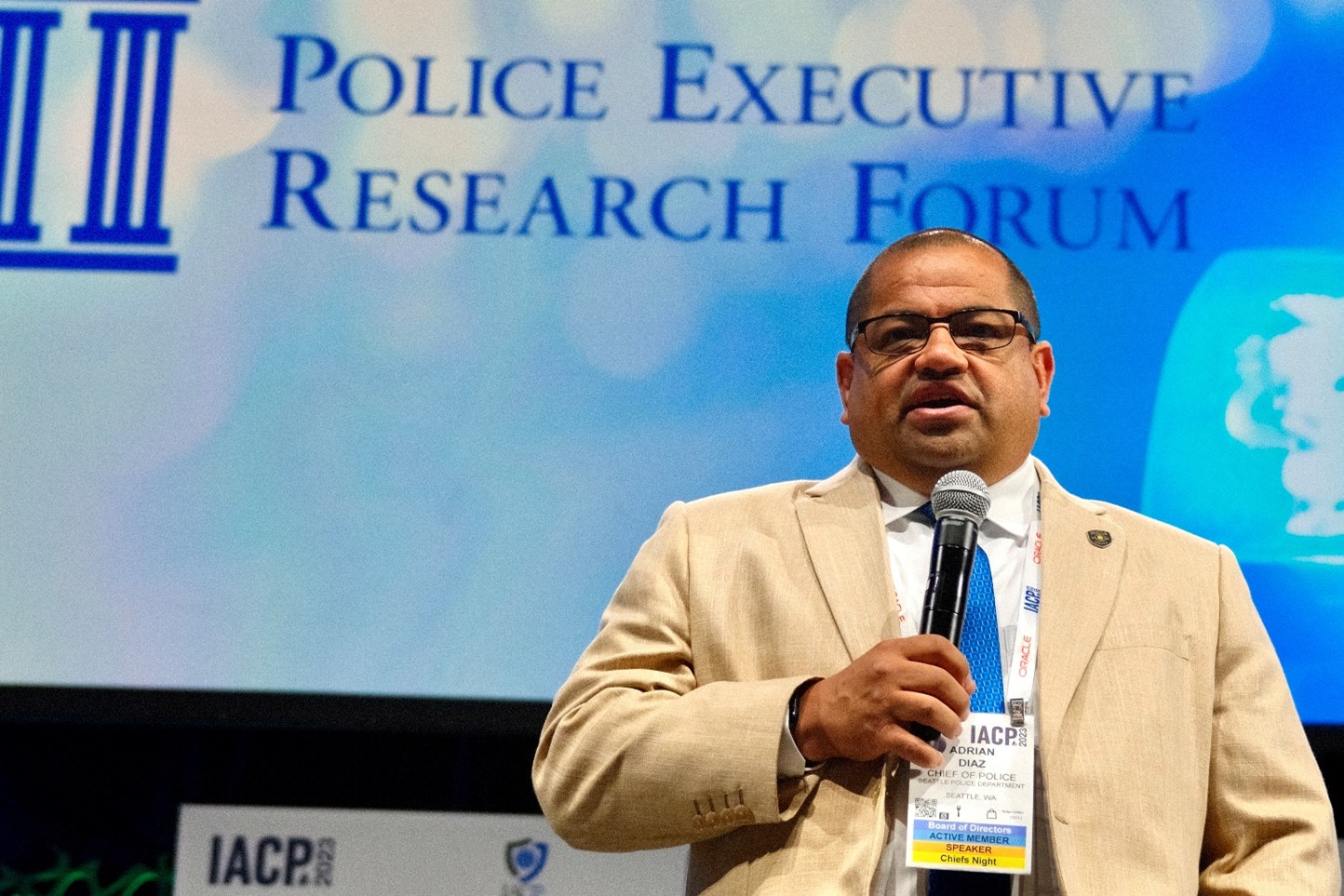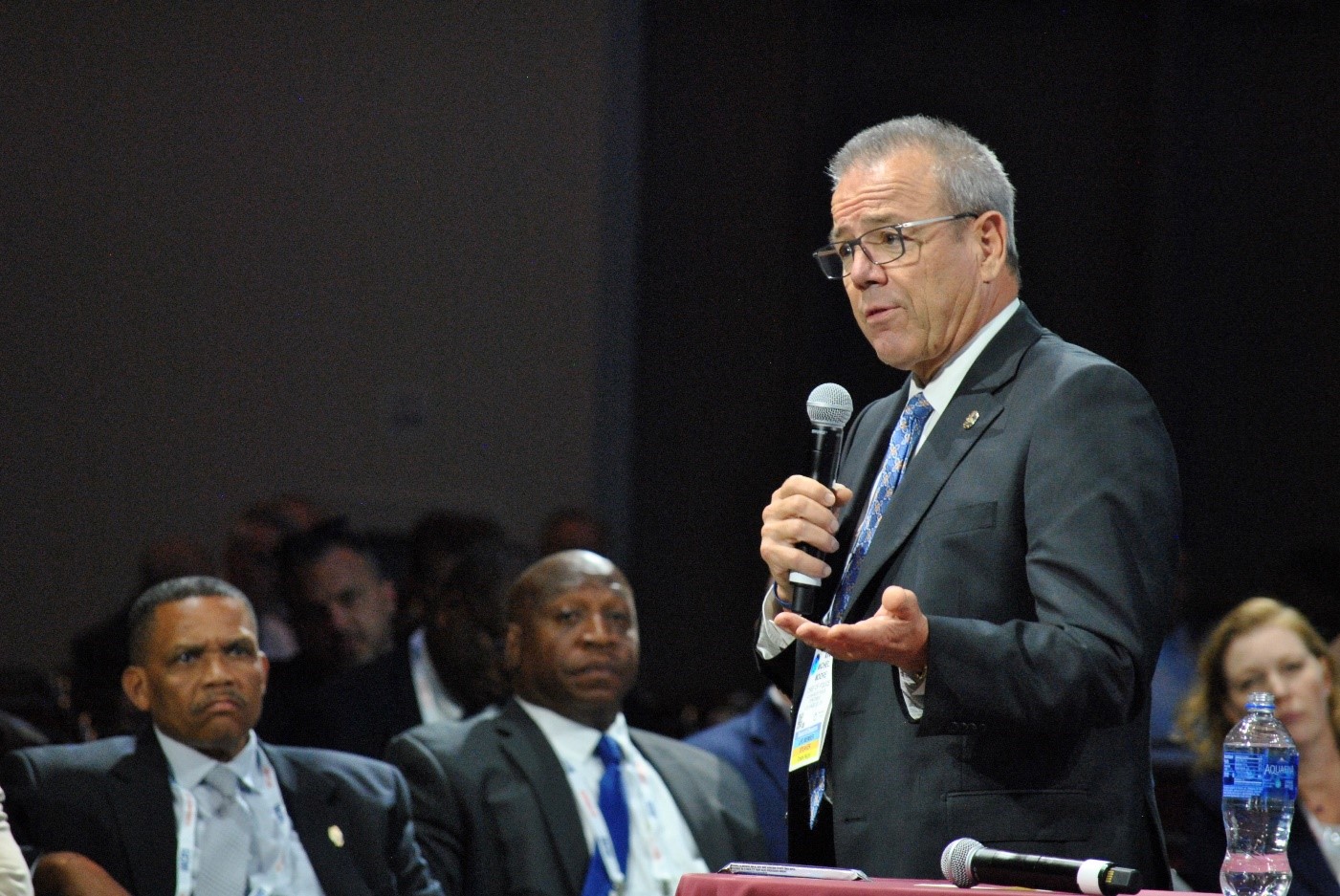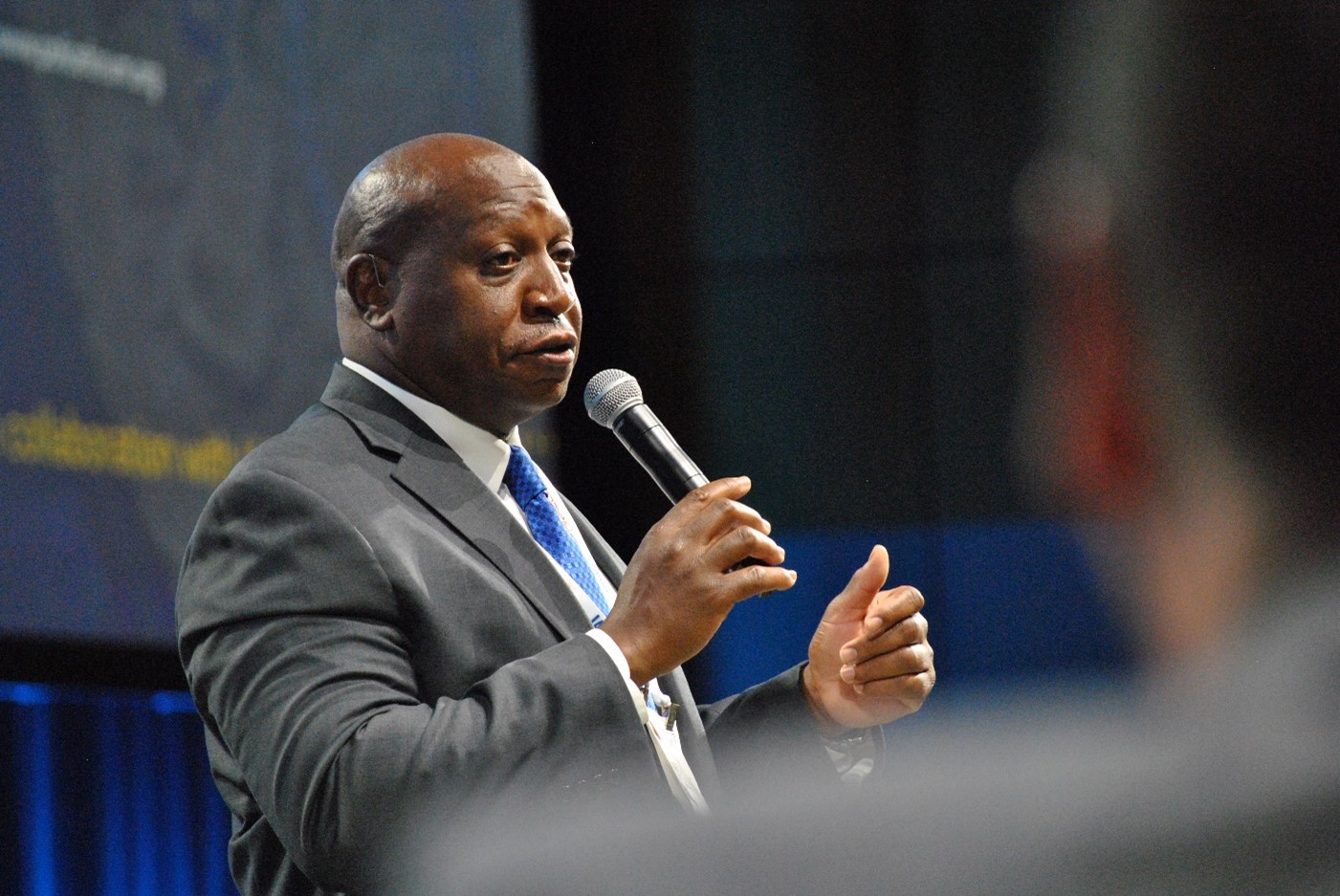|
October 28, 2023 Debating pursuit policies at our Town Hall Meeting
PERF members, As I mentioned last week, we had a lively and engaging four-hour discussion at our recent Town Hall Meeting in San Diego. This week I’d like to share some highlights from our conversation about PERF’s recent report on vehicular pursuits and discuss a recent change to the Houston Police Department’s pursuit policy. For those who have not yet had the opportunity to read the report, we make 65 recommendations across six topics: agency philosophy and policy standards; the role of a supervisor; pursuit interventions, pursuit alternatives, and technology for managing risks; post-pursuit reporting; training; and community engagement. The most important recommendation is that agencies only pursue suspects when two conditions are met: (1) a violent crime has been committed and (2) the suspect poses an imminent threat to commit another violent crime. Town Hall attendees discussed this specific recommendation and other pursuit-related issues.
Professor Geoff Alpert Professor Geoff Alpert, University of South Carolina Over the 30-40 years I’ve been working on pursuits by doing research, interviewing people who fled, and officers who’ve been chasing, the research community has come up with recommendations. But no one from the police community has really come out with a statement. Many of you have changed your policies, but no one has come out to say, This is what we should do. The basic policy has been, What is the government interest in apprehending someone? And what’s the public interest in safety? How that’s been translated has been all over the board. For the first time now we have a statement from a police organization, PERF, explaining how to define that balance, and that is to limit pursuits to events where you know, or at least have some sort of articulable explanation, that the person has been involved in a violent crime.
Capitol Special Police (NC) Chief Roy Taylor Chief Roy Taylor, Capitol Special Police (NC) Many states have a fleeing law that turns a simple pursuit into a felony. I can’t tell you how many times I’ve seen court cases where the officer said, It was a fleeing felon. But the reason for the stop was that it was nighttime and they forgot to turn their lights on when they pulled out of a parking lot. So they’re not driving with their headlights on, the officer initiates a traffic stop, and the person flees. That’s just one of many examples where there’s no real significant crime, yet the officer chases the person 15 or 20 miles, then the person crashes and becomes a paraplegic or kills a family of three. Those are the tragedies. That’s where we as police chiefs have to make sure the officers understand that unless it’s a viable felony because there’s ongoing danger to the public, they need to terminate the pursuit. We also need to inform our first-line supervisors to be critical of these officers when they initiate a pursuit, monitor it closely, and make sure they’re using good judgement.
Washington Association of Sheriffs and Police Chiefs Executive Director Steve Strachan Executive Director Steve Strachan, Washington Association of Sheriffs and Police Chiefs We saw a lot of reform laws come out of 2021, following the death of George Floyd. In Washington State, one of the laws the legislature passed was a pursuit law that really had sort of the opposite effect from what was intended. Washington State law enforcement statewide were restricted from pursuing unless they had probable cause, not reasonable suspicion, for only certain violent crimes. I hired an officer who was killed in a pursuit, and this hits home for all of us. At the same time, in the state of Washington we saw a spike in stolen vehicles, homicides, violent crime, and organized retail theft. I know you could say that’s going on everywhere, but it’s at a higher level in the state of Washington. Some of our agencies track people fleeing from law enforcement. The number of pursuits in which law enforcement engaged stayed the same or had a slight decline. But the number of people fleeing law enforcement went up by 8 to 10 times for the Washington State Patrol. So there are more people out there driving recklessly and way more people fleeing from law enforcement, which is the exact opposite of what we wanted to see. We’re starting to have conversations with state legislators about using technology and establishing meaningful consequences for fleeing police. If you run from the police, we may not chase you, but we’re going to catch you. That’s going to take things like stiffer sentences for stolen cars and fleeing police. And things like surveillance and red-light cameras.
Seattle Police Chief Adrian Diaz Seattle Chief Adrian Diaz Right before the 2021 legislation, we made our policy more restrictive, to the standard of probable cause. State law has now been rolled back to reasonable suspicion. But I’ve still maintained probable cause for a few different reasons. Number one, we pay out larger numbers in lawsuits related to pursuits. And second, I have to make sure I protect my officers from potential legal battles. So that’s been the preference of our department. But we’re still getting in pursuits. We’ve seen an uptick in carjackings, rioting, and violent crime. Our officers are just focusing on violent crime. We’ve seen an uptick in auto theft, and that is a challenge. And I think it would be beneficial to figure out legislative fixes to incarcerate people for a longer period of time for eluding a police officer.
Aurora (CO) Police Chief Art Acevedo Aurora, CO Chief Art Acevedo I’m a defender of the PIT (precision immobilization technique) maneuver and a defender of pursuits. I think we’ve gone from one extreme, where we chased everything to the ground, to an extreme where we become risk averse. We’re now having very violent people who just take off and they know we’re not going to chase. And I believe a lot more people are dying.
LAPD Chief Michel Moore LAPD Chief Michel Moore We saw our pursuits double in 2022 when we saw an increase in auto theft. In Los Angeles we have what we call a balance test. We will not chase someone or initiate a pursuit for someone who refuses to stop. We discontinue and that’s not a pursuit. We do initiate a pursuit on a DUI driver. In the state of California about 1,200 people die each year in alcohol-related crashes. And we have the benefit of having one of the largest air fleets in America, and we’ll have tracking initiated immediately. Officers initiating a pursuit will go into tracking mode, meaning the officers pull back and the airship conducts surveillance on the individual until they stop. If the individual continues to drive in an outrageous fashion, through red lights, then everybody gets pulled off. Spike strips are also an intervention technique, though I know some agencies have banned spike strips because tragically motorists have hit and killed individuals laying out spike strips. This is a balance. We need to discontinue some pursuits. We need active supervision. Officers can develop tunnel vision, and we need a third party to discontinue that pursuit. We need to enforce our standards and hold people accountable. But what I hate is when we see a tragic outcome and vilify the officer’s actions for a pursuit that was in policy but had a bad outcome. So I think establishing and enforcing standards is key to our success.
Metropolitan Nashville Police Chief John Drake Metropolitan Nashville Chief John Drake In Nashville, we’re really restrictive on vehicle pursuits. At the end of the day, you have to think about the value of that human life, whether it’s the police officer or the person they’re pursuing. When you’re chasing a stolen car and that car reaches a speed of 100 or 120, officers and supervisors have to terminate the chase. The price of a human life is not worth it, especially if that person is a juvenile who will not do any jail time.
PERF’s 2023 Town Hall Meeting at the IACP Conference in San Diego Thanks to all who participated in this discussion at the Town Hall Meeting. And as an addendum to Chief Moore’s comments on the dangers of deploying spike strips, a Montgomery County, Maryland officer, Sgt. Patrick Keep, was intentionally struck last week as he attempted to deploy a spike strip and has lost the use of both his legs. The Houston Police Department changes its pursuit policy Last week we saw an example of what can happen when an agency tightens its pursuit policy. In mid-September, the Houston Police Department changed its policy to prohibit pursuits for Class C misdemeanor offenses, such as minor traffic violations. Officers are also no longer allowed to pursue for traffic or municipal warrants, or for non-violent misdemeanor warrants. In the first month under the new policy, high-speed chases dropped 40 percent and chase-related collisions dropped 35 percent. Houston had not made meaningful changes to its pursuit policy for decades, and it took the leadership of Chief Troy Finner to make this change. I spoke with Chief Finner, and he told me that he spent considerable time meeting with officers and supervisors while implementing this policy to show them videos of police pursuits and the sometimes tragic outcomes that can occur. According to the Houston Chronicle, HPD engaged in 6,303 chases from 2018 to 2022, resulting in 27 deaths and at least 740 injuries. HPD’s new policy is a step towards the restrictive policy recommended in our report, and it’s already making a difference by saving lives and careers. Best, Chuck |

